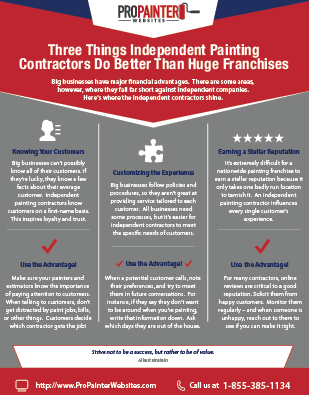Understand Exactly How Seasonal Problems Influence The Success Of Industrial External Paint And Learn The Optimal Durations To Assure Resilient Results For Your Task
Understand Exactly How Seasonal Problems Influence The Success Of Industrial External Paint And Learn The Optimal Durations To Assure Resilient Results For Your Task
Blog Article
Posted By-Burnham Rodriquez
When you're planning a commercial exterior painting task, seasonal aspects can make or break your results. You'll intend to think about how temperature level and humidity impact paint application and drying out times. Selecting the ideal period can guarantee your paint sticks properly and lasts much longer. But which https://www.marketwatch.com/story/these-4-colors-can-be-the-kiss-of-death-when-selling-your-home-2016-08-23 are absolutely the most effective for this type of work? Let's discover the crucial elements that can impact your project's success.
The Effect of Temperature on Paint Application
When you're intending an industrial outside painting task, the temperature can substantially affect just how well the paint sticks and dries out.
Ideally, you intend to repaint when temperature levels range between 50 ° F and 85 ° F. If it's as well cold, the paint may not heal properly, bring about issues like peeling or fracturing.
On the other hand, if it's too warm, the paint can dry too promptly, stopping correct adhesion and causing an unequal finish.
You must likewise take into consideration the moment of day; morning or late afternoon uses cooler temperatures, which can be more positive.
Constantly check the producer's recommendations for the details paint you're making use of, as they typically supply guidance on the excellent temperature variety for optimum results.
Humidity and Its Effect on Drying Times
Temperature isn't the only ecological aspect that influences your industrial exterior painting task; moisture plays a considerable duty too. High humidity levels can slow down drying out times substantially, influencing the general quality of your paint job.
When the air is filled with dampness, the paint takes longer to treat, which can bring about issues like bad attachment and a greater threat of mold growth. If you're repainting on an especially moist day, be gotten ready for prolonged wait times between coats.
mouse click the next web site to monitor neighborhood climate condition and plan accordingly. Ideally, aim for humidity levels between 40% and 70% for optimal drying out.
Maintaining these factors in mind guarantees your task stays on track and provides a lasting surface.
Best Seasons for Commercial Exterior Paint Projects
What's the best season for your commercial external paint tasks?
Spring and very early fall are generally your best options. During these periods, temperature levels are moderate, and humidity degrees are frequently lower, creating ideal problems for paint application and drying.
Stay clear of summertime's intense heat, which can create paint to dry also promptly, causing inadequate bond and finish. Similarly, wintertime's cold temperatures can hinder appropriate drying out and treating, running the risk of the long life of your paint task.
Go for days with temperatures between 50 ° F and 85 ° F for optimal outcomes. Bear in mind to inspect the neighborhood weather prediction for rain, as damp problems can spoil your task.
Planning around these aspects ensures your painting job runs efficiently and lasts much longer.
Conclusion
Finally, planning your commercial external painting jobs around seasonal factors to consider can make a substantial distinction in the end result. By scheduling job during the excellent temperature levels and moisture degrees, you'll make sure far better adhesion and drying out times. Bear in mind to watch on local weather prediction and select the right time of year-- spring and early autumn are your best bets. Taking these steps will certainly help you attain a resilient and professional surface that lasts.
